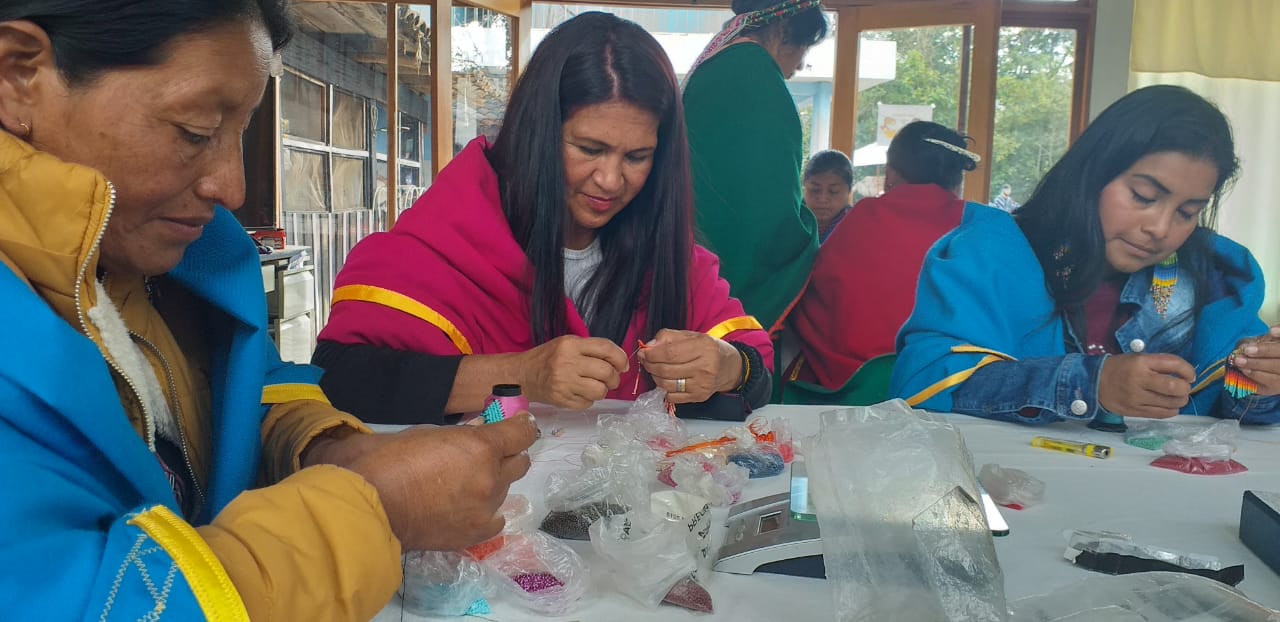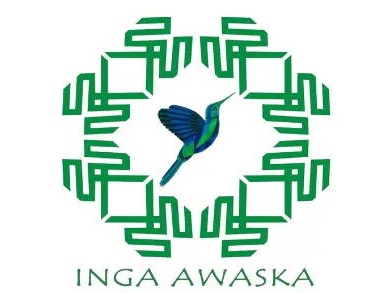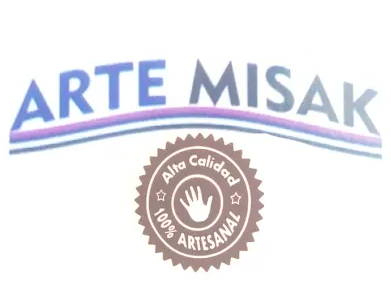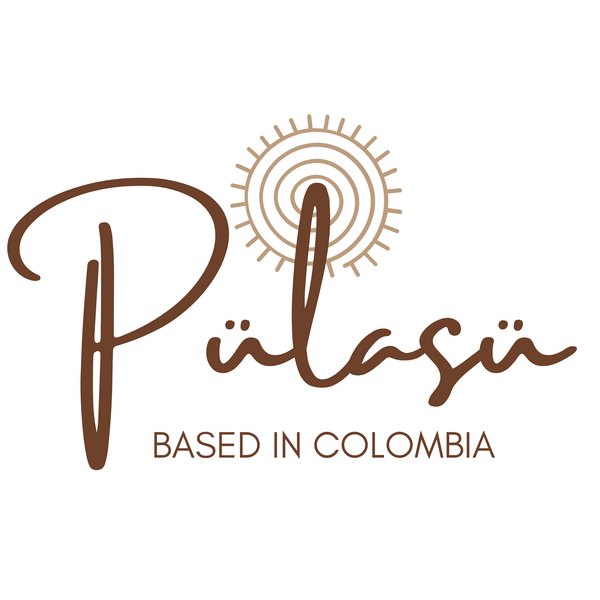
Did you know that Colombia has about 350,000 artisans, of which approximately 60% come from rural areas and indigenous communities, and 65% are women?
To speak of artisans is to speak of the innumerable indigenous communities that for the most part belong to economically depressed sectors of society. Although the main occupations of indigenous peoples differ from country to country, we find the common characteristic that they are populations rich in cultural expressions and artisan techniques that represent an incredible opportunity for employment and sustainable growth.
The culture and identity of the indigenous people of Colombia is a dynamic curiosity that over time can be lost or altered and is the commitment of these different nations to safe keep and continue these treasures. Through weaving and beading, the story of a community and the preservation of its culture and customs has been a need for their human expression and is a powerful transmitter of vital knowledge for the evolution of each society.
Situated in the sunny desert of La Guajira, reside one of the largest indigenous groups in Colombia & Venezuela, los Wayúu.
Their ancestors, the Arawak, gradually settled along the Caribbean coast around 10,000 years ago to flee from harsh conditions and ever since have been through a lot of resilience to protect their culture and traditions. From fighting Spanish invaders to battling the Venezuelan and Colombian government over discrimination and land rights, they are still standing proud of their roots. Flash forward a few thousand years, the Wayúu continue to live in a hostile environment-- droughts and climate change have ruined agriculture production, causing malnutrition to reach communities . Tourism in the area has helped improve their living conditions and way of life by allowing outsiders to take a look inside their traditions, rituals, food, and buy their artisan made goods like the infamous Wayúu mochila and other textiles! When you walk down the streets of Riohacha, you’ll see women selling their handmade woven bags and other accessories for income. For the Wayúu women, weaving is more than a cultural practice and a heritage from their ancestors, it is a way of conceiving and expressing life as they feel and want it. According to the story, Wale ’Kerü, a weaving spider, was the one who taught the woman at a young age how to weave. The secrets of their traditional weaving techniques are part of the rites of passage that adolescent girls undergo when they puberty. The intricate handwoven (designs) you see are called Kanas and are an ancient manifestation of Wayúu art that represent elements in the matriarchal structure of their society, mother nature and their daily life.
As a matriarchal tribe, women are the backbone of the community! As decision makers and protectors of their land, they are looked upon for guidance.
A special gracias to Ines, Oladis, Juan, Rosa, Leonardo, Esteban, Rafael, Paloma, Felipe Y Danilo, who handmade our beautiful mochilas!
❊
Nestled high in the Andean Mountains of Colombia, in a small town called Silvia, live the Misak, also called the Guambianos.
Their ancestral story tells of them being molded from water on their native land, Kauka. Life for them is structured in a dual system: the feminine and masculine, the hot and cold, the sun and moon. Earth and everything that composes it, is the mother. The Misak are identified as those in charge of guaranteeing balance and harmony between nature and human beings; making the commitment to defend it, protect it, maintain it, and return it to humanity. After the colonization of their people and land, many sacred territories were stolen (shocker). Ever since then, they have been fighting for land recovery and have succeeded in gaining the rights to their native land in Cauca once again. Even though we might see "colonization" as something of the past, it's still very present for many indigenous groups in Colombia. Though the Misak have rights to their territories, they are being pushed to undertake a more modern way of life and sell their land to money-hungry landowners who want to gentrify the town. This is a big NO for the Guambianos. Through education and strict policies, they have been relentlessly trying to fight oppressors so that future generations can grow up in a peaceful environment while honoring their traditional heritage and knowledge of horticulture, artisanal methods, fauna, and flora.
Another important piece of their heritage is weaving! Mothers and grandmothers teach their daughters how to weave and bead at a young age in order to preserve the knowledge and the way in which their ancestors wove. Women can find it difficult to earn an livable income but thanks to the sale of their art, they are managing to improve living conditions while telling us their unique story in the form of beading earrings, bags made of sheep wool, and other creations--with mother nature being the focal point behind the designs & colors used.
A huge thank you and shout out to Andrea & Deisy for weaving our beaded earrings and sharing their dreams with us!
❊
THE INGANOS
In the Putumayo department of Colombia, located in the heart of the Sibundoy Valley, there is a small region named Manoy where the Inga Community resides. That is the immediate relatives of the Mitimak families, from the Incas of the Tawain-tisuyu, who migrated to the area around the fifteenth century. The Inga, in fact, are the direct inheritors of the Quechua language! The language and the environment around them are expressed through special spiritual terms that are then orally passed down from elders in the community.
Like the other three groups you have read about, they tackle the same challenges of land rights, overexploitation of natural resources, violence, and basic human rights. They are very passionate about resolving these issues within their community and standing up for their rights because these attacks on their culture do not guarantee the dignified survival, cultural, social, and economic integrity of present generations and future. It’s important to continue and honor the practices their ancestors once carried out. The Inga consider weaving one of those practices; it is an art form where creativity is born from "observations" and "valuing" the thought-provoking world around us. They are carriers of knowledge that has been transmitted orally through generations; this understanding has allowed them to understand their environment and create introspections that express life in the Inga community and strengthen relationships with the elements of nature that are then represented in their unique craftwork.
We partnered with Luz Maria Tisoy, owner of the Inga Awaska workshop in Putumayo, and other local artisans she employs, to bring you colorful and symbolic beaded earrings!
❊
The Embera are the 3rd largest indigneous community in Colombia and are made up of 2 big groups: the Dobida, which translates to river people and The Eyabida, meaning people of the mountains, who are then separated into 2 other big groups: the Katío and Chamí. Being that they are a nomadic and dispersed culture, other clans include Drua, Wounaan, and Quera.
They are initially from the San Juan jungle regions between the divisions of Risaralda and Chocó, though they are situated in 18 other departments in Colombia and have origins in Ecuador and Panama. Sadly, these peaceful, mother nature loving people face cultural extinction and have had to endure violence in their territories for years now; pleading and asking that the Colombian government set up measures to ensure that they are safe from human rights violations. Even while facing these challenges, they are still hopeful and continue to protect their homes and legacy. One of the ways the Embera found an approach to keep their traditions alive is by weaving and beading; their art has been transmitted from generation to generation, passing from grandparents to grandchildren all traditional artisan techniques. They are known for their colorful ‘chaquiras” or beadwork made out of glass beads that is used in their everyday life and ceremonial practices. Their creations are related to their native language, their worldview, and the spiritual world, and contain unique symbols that reflect their ancestral dreams that are connected to Mother Earth and the constant communication they have with their surroundings. Handcrafts also happen to be one of their main sources of income and many end up leaving their native lands to sell on the streets of Medellin and other large cities. Not only is weaving a form of earning a wage, but it is also a way to connect with their ancestors and keep their traditions and culture alive.
We source our eye-catching bracelets and earrings from an Embera Chami artisan family in Antioquia, Colombia.
❊


